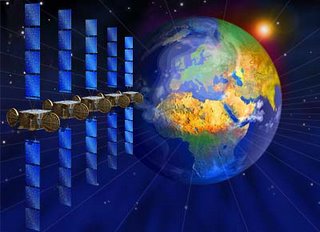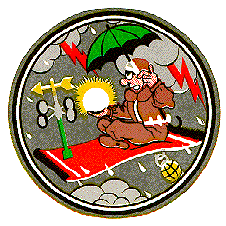In this HFLINK NEWS Special Bulletin:
(1) ALE On-The-Air Week "AOTAW 2006" (13-23 October 2006)
(2) New Amateur Radio ALE Channel List 2006-2007
(3) Amateur ALE Standards
(4) Amateur ALE Net Calls
(5) New PCALE Version Now In Beta Testing Phase
Website:
http://hflink.comDear ALE operator,
Welcome to the first edition of HFLINK NEWS! HFLINK NEWS is a Special Bulletin service of HFLINK Group. The HFLINK Special Bulletin is issued only a few times per year, to keep members of HFLINK Group informed about events and changes in ALE and Selcall worldwide. We hope to link with you soon, and please consider activating your station during ALE On The Air Week in October!
Best Regards,
Bonnie Crystal, KQ6XA
HFLINK Founder
=======BEGIN HFLINK NEWS SPECIAL BULLETIN======
=================================
ALE On-The-Air Week "AOTAW 2006"
=================================
Starts: 0001 UTC Friday 13 OCTOBER (13/10/06)
Ends: 1159 UTC Monday 23 OCTOBER (23/10/06)
10 Days of worldwide Amateur Radio ALE activity...
HFLINK is sponsoring a new International Amateur Radio event called: ALE On The Air Week (AOTAW). All ham radio operators worldwide are invited to participate in 10 days of amateur radio HF-ALE Automatic Link Establishment and HF Selcall activity. AOTAW is an open operating event to explore ALE communications and equipment. The experience gained by participation is also useful for HF emergency and disaster
relief communications.
There are now many hundreds of amateur radio operators worldwide with ALE stations. The AOTAW gives operators a chance to exercise ALE transceivers, antennas, software, systems, and operating procedures.
ALE Operator Certificate for AOTAW2006
=======================================
HFLINK issues a unique ALE Operator Certificate to operators who participate in AOTAW. To qualify for an ALE Operator Certificate, the operator must initiate and complete at least 5 QSOs through Automatic Link Establishment with other ALE operators. The ALE link must then be followed by a communication either by voice or texting. Additional certificate endorsement is issued by HFLINK for operators who link and QSO with 25 ALE stations or more. Logs: After the event, a very simple list of date/ callsign/ frequency log of QSOs should be sent in email plain text to: aotaw2006@ yahoo.com.
Operating Standards for AOTAW
==============================
AOTAW is not a contest. All operators are reminded to be courteous and operate within the recognised Amateur Radio ALE channels and standards. The ALE netcall "HFL" may be used as the general CQ call for the event. ALLCALLs (one-way linking) should not be used in AOTAW, and a QSO started by an ALLCALL does not qualify as a valid ALE link for certificate.
About AOTAW
============
AOTAW provides a way for more operators to gain valuable practical knowledge and expertise in the operation of an Amateur Radio ALE station. Amateur operators who use ALE for government and non-governmental organisations may be especially interested in participation, for this is a chance to explore the various operational
aspects of ALE that may not be utilised otherwise. The 10 days of AOTAW enables operators to participate as they can, for any amount of time in the event, and to experience ALE operation under various ionospheric propagation conditions. Also, an ALE demonstration Special Event HF Station will be in operation during the ARRL Pacificon convention in California USA on 14-15 October.
=============================================
New Amateur Radio ALE Channel List 2006-2007
=============================================
The new channel list is effective 01 September 2006. PCALE channel fill files (QRG) will be available in August.
ALE Automatic Link Establishment and Selective Calling
International Amateur Radio Service
Amateur Radio ALE Channel List 2006A
CHAN/ kHz /GENERAL-PURPOSE/IARU-REGION/(Sounding)
=================================================
01= 1806.0 VOICE-DATA- Regional R1,3
02= 1840.5 VOICE-DATA- Regional (Sound=R1)
03= 1845.0 VOICE DATA- INTERNATIONAL COMMON R1,2,3
04= 1996.0 VOICE-DATA- Regional (Sound=R2)
05= 3565.0 DATA-VOICE- Regional R1,3
06= 3617.0 DATA-VOICE- Regional (Sound=R1)
07= 3626.0 DATA-VOICE- Regional (Sound=R2)
08= 3791.0 VOICE- INTERNATIONAL COMMON R1,2,3
09= 3996.0 VOICE- Regional R2
10= 5371.5 VOICE- Emergency; Regional R1,2
11= 5403.5 VOICE-DATA- Emergency; Regional R1,2
12= 7030.5 DATA- Regional (Sound=R3)
13= 7040.5 DATA- Regional (Sound=R1)
14= 7065.0 VOICE- International/Regional R1,3
15= 7102.0 DATA-VOICE- International R1,2,3 (Sounnd=R2)
16= 7165.5 VOICE- INTERNATIONAL COMMON R1,2,3
17= 7296.0 VOICE- Regional R2
18= 10136.5 DATA- VOICE-International R1,2,3
19= 10145.5 DATA- INTERNATIONAL COMMON (Sound=R1,2,3)
20= 14100.5 DATA- International R1,2,3
21= 14109.5 DATA- International (Sound=R1,2,3)
22= 14342.5 VOICE-INTERNATIONAL COMMON; R1,2,3
23= 14346.0 VOICE-International R1,2,3
24= 18106.0 DATA- International (Sound=R2,3)
25= 18117.5 VOICE-DATA-INTERNATIONAL COMMON R1,2,3(Sounnd=R1)
26= 18157.5 VOICE-International R1,2,3
27= 21117.5 DATA- International(Sound=R1,3)
28= 21157.5 DATA- International R(Sound=R2)
29= 21437.5 VOICE- INTERNATIONAL COMMON R1,2,3
30= 24926.0 DATA- International (Sound=R1,2,3)
31= 24977.5 VOICE- International Regional R1,2,3
32= 28117.5 DATA- International/Regional (Sound=R1)
33= 28146.0 DATA- International/Regional (Sound=R2)
34= 28327.5 VOICE- INTERNATIONAL COMMON R1,2,3
35= 50162.5 VOICE-DATA- Regional
36= 144162.5 VOICE-DATA- Regional
Note 1) All Amateur Radio ALE channels use "USB" Upper SideBand (including frequencies below 10MHz). USB conforms to international standards for ALE / Selcall, and enables compatibility with commercial transceivers.
Note 2) The ALE-Selcall list is designed for international, regional, and local use in the Amateur Radio Service. All channels are subject to the different rules, regulations, and bandplans of the region and local country of operation. It is the responsibility of every operator to maintain the highest technical and ethical standards for all transmissions. Some channels or modes in the list may not be available in every country. The HF spectrum is a shared resource, so there is no
guarantee that a channel is clear in a local area or region.
Note 3) Use of 5MHz channels and frequencies may vary in each country. Although 5MHz ALE and SELCALL transmissions are authorised in some countries, USA does not yet allow it on 5MHz. Therefore, operators in USA may receive monitor the 5MHz channels, but care should be taken to lock out the transmitter from making ALE or Selcall transmissions (except in case of an Emergency).
======================
Amateur ALE standards
======================
1. ALE System= MIL-STD 188-141 ; FED-1045 (8FSK, 2kHzBW)
2. Call or sounding transmission duration: 30 seconds.
3. Scan rate: 1 or 2 channels per second.
4. Sounding Interval= 60 Minutes (or more) (for same channel)
5. CQ Call= Netcall to "HFL" net
6. Digi Texting/Data Audio Centre Frequency= 1500HZ (to 1800HZ)
7. Short text messaging standard = AMD
8. TWS SOUNDING (Recommended)
9. Always transmit "CLEAR LINK" after ALL CALLS and LINKING!
=======================
Amateur ALE Net Calls
=======================
1. HFL = CQ, ALL AMATEUR RADIO ALE STATIONS
2. HAM = EMERGENCY/RELIEF NET ONLY, AMATEUR:NGO/GOV
3. GPR = GEO POSITION REPORTS
4. RPT = STATION STATUS REPORTS
5. QRZ = REPLY CALL PROMPT
6. CQA = RESERVED FOR FUTURE USE
============================================
New PCALE Version Now In Beta Testing Phase
============================================
PCALE software author Charles Brain G4GUO has been working on the new version over the past year. Charles has been collaborating with Steve N2CKH (MARS-ALE) on the software and radio support, and with Bonnie KQ6XA on some of the innovative new features. A small group has been working behind the scenes using the experimental software. The exciting release of the new improved PCALE is dependent upon the successful testing of the PCALE Beta Version. A group of volunteer ALE amateur radio operators is now using it on the air. The PCALE Beta Test Group is looking for more operators, but membership is limited. If you are an experienced operator with PCALE or MARS-ALE, please consider it. Beta Test Group: http://groups.yahoo.com/group/pcale/
Some Of The New PCALE Features Now In Beta Testing:
====================================================
1. Separately programmable sounding and scanning channels
2. Sounding/traffic associated channels (similar to 3G ALE)
3. New Text Keyboarding window for real time texting
4. GPS interface with ALE-GPR (Geo-Position Reporting)
5. Automatic station status reporting (80 Character text)
6. Ambush (auto message, link when a specific station is heard)
7. Easy channel scan groups and alphanumeric group labeling
8. Improved spectrum scope display, sync, and audio AGC
9. Improved user interface and option setup
10. Improved scanning reliability and timing
11. Improved and expanded radio interface
12. CAT support for more transceivers
13. Improved callsign (address) input
14. Improved modem operation and decoding
15. Other features and improvements.
==============
ABOUT HFLINK
==============
HFLINK is an international resource: for radio operators using ALE Automatic Link Establishment and Selcall Selective Calling; for the development of communications for organisations, Emergency / Relief networks; and for the development of ALE operating methods applicable to Amateur Radio Service. HFLINK is the Frequency and Address Coordination group for Amateur Radio ALE and Selective Calling.
HFLINK Website: http://hflink.com
========END HFLINK NEWS SPECIAL BULLETIN========
(c)2006 HFpack, Inc. All rights reserved.





